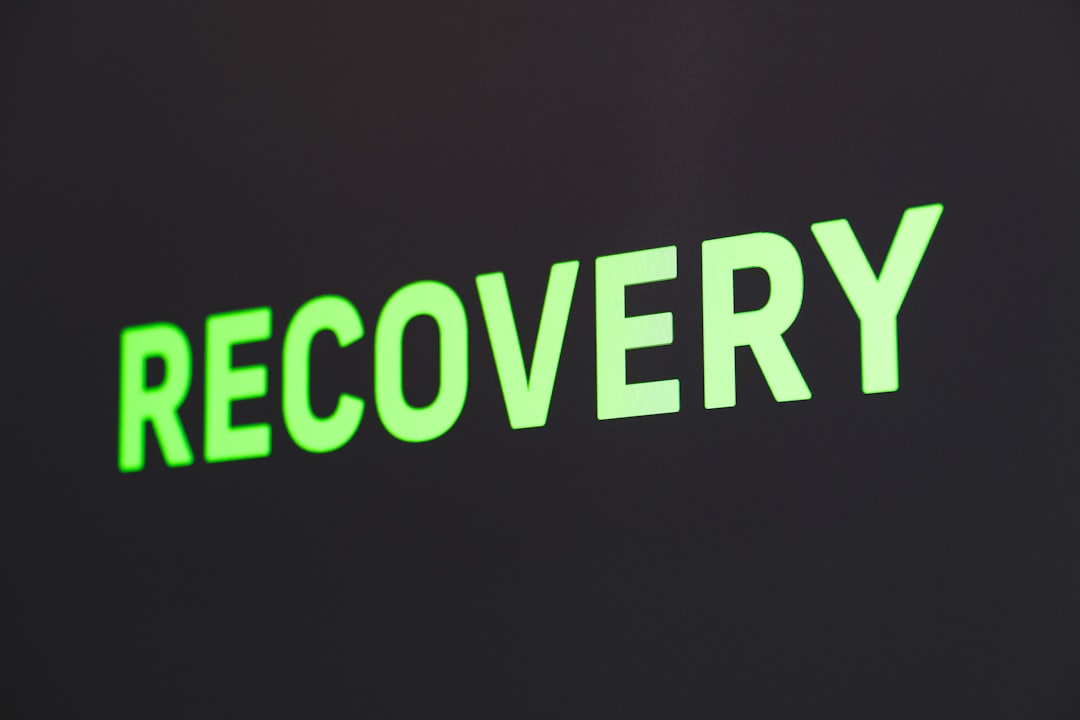The Ultimate Guide to Improving Workout Recovery

Why Effective Recovery is Your Key to Fitness Gains
Workout recovery is the process your body uses to repair muscle tissue, replenish energy stores, and adapt to the stress of exercise. Here’s what you need to know:
Key Elements of Effective Recovery:
- Immediate (0-2 hours): Cool down, hydrate, consume protein and carbs
- Short-term (2-24 hours): Sleep 7-9 hours, gentle stretching, foam rolling
- Long-term (24+ hours): Rest days, proper nutrition, stress management
Signs You Need Better Recovery:
- Muscle soreness lasting more than 3-4 days
- Declining workout performance
- Mental fatigue and burnout
- Frequent injuries or illness
Whether you’re strength training or doing cardio, what happens after your exercise matters just as much as the workout itself. During intense activity, your muscles get microscopic tears. Recovery is when your body rebuilds them stronger, supporting muscle growth, preventing injuries, and boosting your energy. Prioritizing recovery is an investment in long-term health that extends beyond the gym.
Research shows that muscles are most receptive to nutrients for about 30 minutes after exercise. Sports medicine experts recommend up to 1.7 grams of protein per kilogram of body weight daily for active individuals. Most people need 7-9 hours of sleep each night for optimal recovery.
With over 40 years in the fitness industry, I’m Pleasant Lewis, and I’ve seen at Fitness CF how proper recovery transforms not just workout performance, but overall quality of life.

Your Post-Workout Playbook: Immediate and Short-Term Recovery Tactics
After a tough workout, your recovery journey is just beginning. Those first few hours are crucial for helping your body shift from “go mode” to “repair and rebuild,” setting the stage for how well you adapt and grow stronger.
Kickstart the Process with a Proper Cool-Down
Skipping your cool-down is a common mistake. Instead of stopping abruptly, your body needs to slow down gradually.
A proper cool-down involves 5-10 minutes of gentle cardio – think easy walking, slow jogging, or light cycling. This isn’t about burning more calories; it’s about helping your heart rate come down gradually and preventing that dizzy, lightheaded feeling that can hit when you stop too suddenly.
During intense exercise, your blood flow shifts to support your working muscles. A good cool-down helps redistribute that blood flow back to your vital organs, preventing blood pooling in your legs and reducing your risk of dizziness. Your goal is to bring your heart rate down to around 100 beats per minute before you move on to the next phase of recovery.
Active Recovery: Stretching and Foam Rolling
Once your heart rate is down, active recovery like stretching and foam rolling is key for the workout recovery process.
Static stretching works wonders when your muscles are still warm from exercise. The key is holding each stretch for about 30 seconds – long enough to help lengthen those muscle fibers and improve your flexibility and range of motion. Stretching should feel like a gentle pull, never sharp pain. Stretching is key for preventing injury, and it’s one of the simplest ways to support your body’s natural healing process.
Your essential post-workout stretches should target the major muscle groups you’ve just worked:
- Quadriceps stretch: Stand tall, grab your ankle, and gently pull your heel toward your glutes
- Hamstring stretch: Sit with one leg extended, reach toward your toes while keeping your back straight
- Chest stretch: Clasp your hands behind your back and gently lift them to open up your chest
- Back stretch: Lie down, bring one knee to your chest, then gently twist it across your body
Foam rolling is like giving yourself a therapeutic massage. This technique, also called myofascial release, helps loosen tight spots in the connective tissue that surrounds your muscles. While you’re rolling, you’re improving circulation and working out those stubborn knots that can develop after intense training.
A 2015 study on foam rolling showed promising results for improving performance and reducing muscle soreness. Spend about 1-2 minutes on each muscle group, rolling slowly and paying extra attention to any tender spots.

These immediate steps create the foundation for effective recovery, giving your body the best environment to heal and adapt naturally. For more detailed guidance on preparing your body before and after exercise, check out The Importance Of Warm Up And Cool Down Exercises A Comprehensive Guide and our Stretching Routines To Improve Flexibility And Prevent Injuries.
The Ultimate Fueling Guide for Optimal Workout Recovery
After a workout, your body is like a high-performance engine needing the right fuel. Your muscles have microtears to mend and energy stores to replenish, making your system primed to absorb nutrients. Post-workout nutrition is your secret weapon for effective workout recovery, providing the building blocks to repair, rebuild, and come back stronger.
The Role of Nutrition in Effective Muscle Repair
After a tough workout, your muscles have experienced microscopic damage and depleted their energy, creating an opportunity for growth. This is where macronutrients are key.
Protein stands as your muscle repair superhero. It provides the essential amino acids your body needs to patch up those microscopic tears and build new muscle tissue. Research suggests consuming 20-40 grams of high-quality protein after your workout gives your muscles the best chance to recover effectively. While experts once believed in a strict “anabolic window,” current research shows this window is actually much wider, extending several hours post-exercise. Still, getting protein relatively soon after your workout remains a smart move.
Carbohydrates serve as your energy restoration crew. During intense exercise, your body burns through glycogen (stored carbohydrates) for fuel. Replenishing these stores is crucial for feeling energized later and preparing your body for your next workout. Athletes often aim for about half a gram of carbohydrates per pound of body weight after training, though your needs may vary.
Healthy fats play a supporting role in your overall nutrition plan. While vital for hormone production and overall health, they’re less critical immediately after exercise. Fats can slow down the absorption of protein and carbs, so focus on incorporating them throughout your day rather than right after your workout.
The real magic happens when you combine protein and carbohydrates. This powerful duo supports muscle repair and helps prevent injuries by optimizing recovery. Research shows that this combination improves insulin response, which helps drive nutrients into muscle cells more effectively.
For more detailed guidance on post-workout nutrition, check out our comprehensive guide on What To Eat After A Workout.
Some excellent post-workout food combinations include grilled chicken with sweet potatoes and vegetables, salmon with quinoa and steamed greens, Greek yogurt with berries and granola, black bean and quinoa bowls, lentil soup with whole-grain bread, or a protein shake with banana.
Hydration: The Most Essential Nutrient for Recovery
Water is arguably the most important nutrient for workout recovery, yet it’s often overlooked in favor of protein powders and snacks.
During exercise, you lose significant amounts of fluid through sweat. Even mild dehydration can throw a wrench in your recovery process, leading to increased muscle soreness, reduced performance, and slower healing. Cleveland Clinic research shows that dehydration directly impacts your muscle’s ability to repair itself effectively.
Your body relies on water for virtually every recovery process. It transports nutrients to your muscles, helps regulate your body temperature, and flushes out metabolic waste. When you’re dehydrated, all of these processes slow down, making your workout recovery less efficient.
Electrolytes deserve special attention in your hydration strategy. These minerals – particularly sodium and potassium – are lost through sweat and play crucial roles in muscle function and fluid balance. Without adequate electrolytes, you might experience muscle cramps, fatigue, or that sluggish feeling that lingers after workouts.
The golden rule for post-workout rehydration is to drink 20-24 ounces of fluid for every pound of body weight lost during exercise. This supports your body’s ongoing recovery processes.
Start hydrating before you even begin exercising, continue sipping during your workout, and prioritize fluid replacement afterward. Your body will thank you with faster recovery and reduced soreness.
For more strategies on supporting your recovery process, explore our guide on What Are The Best Ways To Relieve Sore Muscles.
Proper nutrition and hydration aren’t just about feeling good after today’s workout – they’re investments in your long-term fitness journey and overall health.
Mastering Long-Term Recovery: Sleep, Rest, and Healthy Habits
Workout recovery is a marathon, not a sprint. Beyond immediate post-workout steps, the real magic happens when recovery becomes a lifestyle. Weaving sleep, rest days, and healthy habits into your daily routine builds a foundation that keeps you strong, energized, and injury-free for years, helping you avoid overtraining syndrome.
The Power of Sleep and Rest Days for Your Workout Recovery
Sleep is the single most important recovery tool. It’s crucial because your body does its best repair work while you’re dreaming.
During deep sleep, your body becomes a busy construction site. Blood flow increases to your muscles, tissue growth accelerates, and those microscopic tears from your workout get patched up. Most importantly, your pituitary gland releases growth hormone – the star player in muscle repair and building. Research shows that sleep deprivation can seriously mess with this process, ramping up inflammation and throwing your hormones out of whack.
The sweet spot for most people is 7-9 hours of quality sleep each night. Some professional athletes even aim for 10 hours or more! If you’re consistently getting less than seven hours, you’re essentially working against yourself.
Rest days are when your muscles actually get stronger. While it can feel counterproductive, taking a day off is when the hard work from the gym pays off, as your body adapts and rebuilds.
You have two options for rest days: active rest and passive rest. Active rest might include a gentle walk, some easy yoga, or a leisurely bike ride – activities that get your blood flowing without taxing your system. Passive rest means truly taking it easy. Both have their place in a well-rounded recovery plan.
The key is listening to your body and not feeling guilty about taking breaks. For more insights on why rest days are non-negotiable, check out 7 Key Benefits Of Rest Days.
Healthy Lifestyle Strategies to Support Recovery
Workout recovery isn’t just about what happens in the gym or even in your bedroom. It’s about creating a lifestyle that supports your body’s natural healing processes. This means looking at the bigger picture of your daily habits and stress levels.
Stress management is huge for recovery. When you’re dealing with chronic stress, your body produces cortisol – a hormone that can interfere with muscle repair and put your body in survival mode, making it harder to recover.
Finding healthy ways to manage stress – whether through mindfulness practices, meditation, or simply making time for hobbies you enjoy – can dramatically improve your recovery. Even taking a few deep breaths before bed can help.
Listening to your body is a crucial skill. Your body constantly sends signals about what it needs. Extreme muscle soreness that lasts more than 3-4 days, mental drain, or performance plateaus are all signs you need more recovery time or need to dial back the intensity.
Factors like your fitness level, workout intensity, and even your age all influence how much recovery you need. Children, teenagers, and older adults often need more recovery time than young adults. Don’t be afraid to adjust your plans when your body tells you to.
Consistent daily habits form the foundation of good recovery. This includes maintaining a balanced diet, staying consistently hydrated, and sticking to a regular sleep schedule. These provide the stable environment your body needs to repair itself efficiently.
One simple habit that can make a big difference is limiting screen time before bed. The blue light from phones and tablets can disrupt your natural sleep cycle, making it harder to get that deep, restorative sleep your muscles crave.
If you’re dealing with an injury, don’t let it derail your entire routine. Learn how to adapt with our guide on How To Work Out Safely While Recovering From Injuries.
Habits That Hinder Your Workout Recovery
Just as some habits boost your recovery, others can work against your hard efforts. Being aware of these recovery saboteurs can help you make better choices.
Alcohol consumption is a big one. Regular or excessive drinking can seriously impact your workout recovery. Alcohol dehydrates you, disrupts sleep quality, and interferes with the muscle repair process.
Tobacco use is another major recovery roadblock. Smoking damages your musculoskeletal system. Research shows that tobacco use increases the risk of muscular injuries and slows down healing.
Poor nutrition can undo your hard work. Regularly eating ultra-processed foods deprives your body of the nutrients it needs for repair. No amount of stretching can compensate for a consistently poor diet.
Excessive caffeine intake, especially later in the day, can disrupt your sleep cycle. While a pre-workout coffee can help, too much caffeine can leave you wired when you should be winding down.
Finally, chronic stress floods your body with hormones that interfere with recovery. Finding healthy outlets for stress isn’t just good for your mental health; it’s essential for your physical recovery too.
By being mindful of these habits and making gradual changes, you create an environment where your body can truly thrive. Healthy living is about progress, not perfection.
Frequently Asked Questions About Muscle Recovery
When it comes to workout recovery, many people have the same questions. It can feel like a puzzle, so let’s clarify the most common concerns.
How long does workout recovery take?
There’s no one-size-fits-all answer to workout recovery time. Your body is unique, and several factors influence how quickly you bounce back from exercise.
Recovery time typically ranges from 24 to 72 hours, but this depends heavily on your workout intensity, current fitness level, sleep, and nutrition. After a light yoga class, you might feel refreshed the next day. But after a challenging strength session, your muscles might need two to three full days to fully repair.
Your body is constantly sending you signals. Signs you need more recovery time include muscle soreness that lingers beyond three or four days, feeling mentally drained, hitting performance plateaus, or just feeling burned out. These are your body’s way of asking for more time to adapt and grow stronger.
Can I work out with sore muscles?
Yes, you can work out with sore muscles, but it’s key to distinguish between normal muscle soreness and pain from injury.
Delayed Onset Muscle Soreness (DOMS) is that familiar dull ache that shows up 24 to 72 hours after a workout. It’s a normal sign your body is adapting. Light activity can actually help with this soreness by increasing blood flow to deliver nutrients and remove waste products.
However, avoid training the same sore muscle group intensely until it has recovered. If your legs are sore from yesterday’s squats, today might be perfect for some upper body work or a gentle walk. Sharp, localized pain is different from soreness – that’s your body’s warning system telling you to stop.
Active recovery during soreness can include gentle stretching, easy walking, or light swimming. These activities promote blood flow without adding stress to already-recovering muscles. The benefits of cardio extend beyond just burning calories – gentle cardiovascular exercise can actually speed up your recovery process.
What is the best thing to eat right after a workout?
Your post-workout meal is like giving your body the perfect building materials for repair and growth. The winning combination is protein and carbohydrates, and this pairing works like magic for workout recovery.
Aim for 20 to 40 grams of protein to provide the amino acids your muscles need for repair. This supports muscle protein synthesis, your body’s process for rebuilding stronger muscle tissue. Carbohydrates replenish your glycogen stores – refilling your energy tank for tomorrow’s activities.
While the idea of a strict 30-minute “anabolic window” has been debunked, eating within an hour or two after your workout is still a smart strategy. Choose easily digestible foods to help your body absorb nutrients quickly.
Chocolate milk is a favorite among athletes because it provides both protein and carbs. A protein shake with banana offers similar benefits and is convenient. Greek yogurt with berries gives you protein, carbs, and beneficial probiotics.
The benefits of strength training become even more pronounced when you fuel properly afterward. Give your muscles the nutrients they need to come back stronger. For more detailed guidance, check out The Role Of Nutrition In Fitness What To Eat Before And After A Workout.
Workout recovery isn’t just about what happens immediately after exercise – it’s about creating sustainable habits that support your long-term health and fitness goals. Listening to your body and providing it with proper nutrition, rest, and care will help you achieve lasting results.
Conclusion: Integrate Recovery for a Stronger, Healthier You
This guide has shown that workout recovery is an active, intentional part of your fitness journey. Think of it as your body’s upgrade system: exercise signals the need to get stronger, but proper recovery provides the tools to rebuild better than before. Without it, you’re missing a key component of progress.
The strategies we’ve covered work together as a team. Your cool-down and stretching help your body transition from work to recovery mode. Proper nutrition and hydration provide the raw materials for repair and growth. Quality sleep and rest days are when the real construction happens, making you stronger.
The most successful people understand that healthy living means balancing effort with recovery. They know strength training benefits compound with adaptation time, and cardio benefits multiply when you’re well-rested and fueled.
Recovery as a lifestyle means listening to your body, responding with kindness, and understanding that rest is productive. It means prioritizing sleep not as a luxury, but as a non-negotiable part of your health routine.
The long-term health benefits of smart recovery extend far beyond just feeling less sore. When you consistently support your body’s natural healing processes, you’re investing in decades of active, vibrant living. You’re reducing your risk of injury, improving your mood, and building the kind of sustainable fitness habits that last a lifetime.
Consistency is key – not just in your workouts, but in your recovery practices. The person who stretches for five minutes after every workout will see more benefits than someone who does an hour-long stretching session once a month. The same goes for sleep, nutrition, and stress management. Small, consistent actions create remarkable changes.
At Fitness CF, we believe a holistic approach to fitness includes smart training and even smarter recovery. We’ve seen countless members transform their relationship with health when they accept recovery as an essential part of their routine.
Ready to experience the power of proper workout recovery for yourself? Start your fitness journey with us today and find how the right balance of challenge and recovery can open up your strongest, healthiest self.







